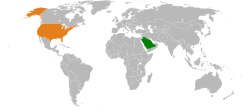| 43rd G7 summit | |
|---|---|
 |
|
| Host country | Italy |
| Date | 26–27 May 2017 |
| Venue(s) | Taormina (ME), Sicily, Italy |
| Participants | |
| Follows | 42nd G7 summit |
| Precedes | 44th G7 summit |
| Website | www.g7italy.it/en |
The 43rd G7 summit was held on May 26–27, 2017[1] in Taormina (ME), Sicily, Italy.[2] In March 2014, the G7 declared that a meaningful discussion was currently not possible with Russia in the context of the G8. Since then, meetings have continued within the G7 process.
It was the first time since 1987 that the G7 summit held in Italy was not hosted by Silvio Berlusconi. The participation of Angela Merkel and Theresa May made it the first time two G7 female leaders were principals in the G7 summit.
Contents
[hide]
Leaders at the summit[edit source]
The attendees include the leaders of the seven G7 member states as well as representatives of the European Union. The President of the European Commission has been a permanently welcome participant at all meetings and decision-making since 1981.
The 43rd G7 summit was the first summit for British Prime Minister Theresa May, French President Emmanuel Macron, Italian Prime Minister Paolo Gentiloni, and U.S. President Donald Trump.
Participants[edit source]
| Core G7 members Host state and leader are shown in bold text. |
|||
| Member | Represented by | Title | |
|---|---|---|---|
| Canada | Justin Trudeau | Prime Minister | |
| France | Emmanuel Macron | President | |
| Germany | Angela Merkel | Chancellor | |
| Italy | Paolo Gentiloni | Prime Minister | |
| Japan | Shinzō Abe | Prime Minister | |
| United Kingdom | Theresa May | Prime Minister | |
| United States | Donald Trump | President | |
| European Union | Jean-Claude Juncker | Commission President | |
| Donald Tusk | Council President | ||
| Guest Invitees (Countries) | |||
| Member | Represented by | Title | |
| Ethiopia | Hailemariam Desalegn | Prime Minister | |
| Guinea | Alpha Conde | President | |
| Kenya | Uhuru Kenyatta | President | |
| Niger | Mahamadou Issoufou | President | |
| Nigeria | Yemi Osinbajo | Acting President | |
| Tunisia | Beji Caid Essebsi | President | |
Gallery of participating leaders[edit source]
Invited guests[edit source]
International organizations[edit source]
-
African Development Bank
Akinwumi Adesina,
President -
OECD
José Ángel Gurría,
Secretary-General -
International Monetary Fund
Christine Lagarde,
Managing Director

























